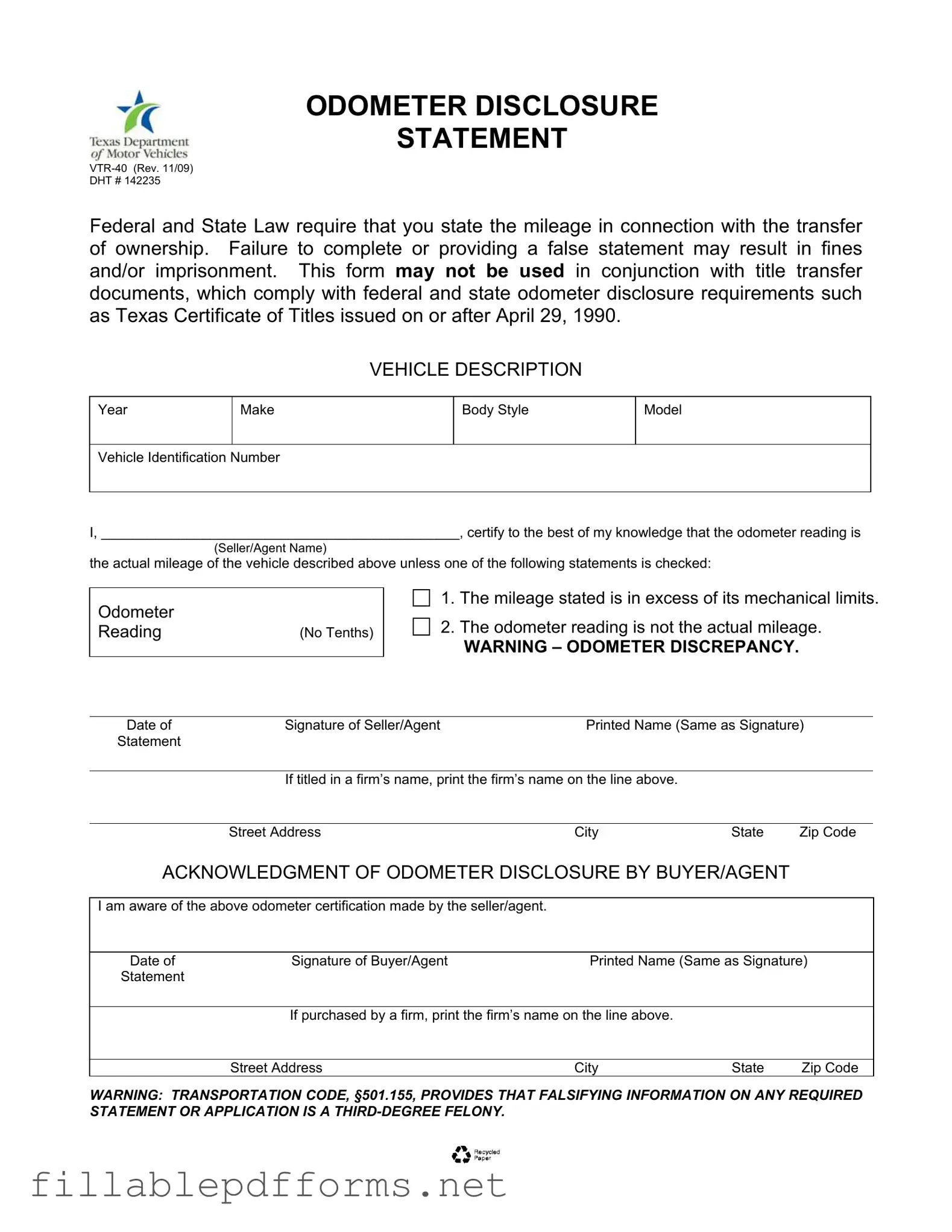The Texas Odometer Statement form, officially known as VTR-40, plays a crucial role in the process of transferring vehicle ownership. This form is designed to ensure transparency regarding the mileage of a vehicle at the time of sale, which is a requirement under both federal and state laws. When completing the form, the seller or their agent must provide specific information, including the vehicle's description—such as its year, make, body style, model, and Vehicle Identification Number (VIN). The seller must then certify, to the best of their knowledge, that the odometer reading reflects the actual mileage, unless they indicate otherwise by checking one of the provided statements. These statements cover scenarios where the mileage exceeds mechanical limits or where the odometer reading is not accurate. It is important to note that failing to complete the form correctly or providing false information can lead to serious consequences, including fines or imprisonment. Additionally, this form cannot be used in conjunction with title transfer documents that meet federal and state odometer disclosure requirements, such as Texas Certificates of Title issued after April 29, 1990. The form also includes an acknowledgment section for the buyer or their agent, confirming their awareness of the odometer certification made by the seller. Ultimately, the Texas Odometer Statement serves as a vital tool for protecting both buyers and sellers in the vehicle transaction process.
